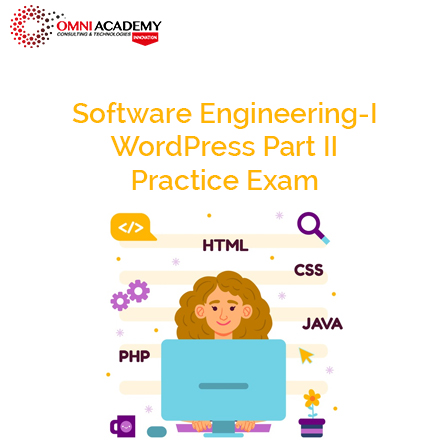Oracle Order Management R12 Essentials certification exam covers topics such as: how to access and navigate in the R12 E-Business Suite, data entry, information retrieval in the form of a query and the ability to access online help. Candidates must also demonstrate knowledge of key features/functionalities of Oracle Order Management, Order Entities and Order Flows, Multiple Organization Access Control Setup, Oracle Inventory Setup for Oracle Order Management, Oracle Receivables Setup for Oracle Order Management, Oracle Order Management Setup Steps, Holds, Order Purge, and Exception Management Setup, Basic Pricing Setup, key features and Setups of Shipping Execution, Functionality of APIs. Up-to-date training and field experience are recommended.[/vc_column_text]
Navigating in R12 Oracle Applications
- Log in to Oracle Applications
- Navigate from Personal Home Page to Applications
- Choose a responsibility
- Create Favorites and set Preferences
- Use Forms and Menus
- Enter data using Forms
- Search for data using Forms
- Access online Help
- Run and monitor Reports and Programs
- Log out of Oracle Applications
Introduction to Oracle Applications R12
- Explain the footprint of R12 E-Business Suite
- Describe the benefits of R12 E-Business Suite
- Describe R12 E-Business Suite architecture
Shared Entities and Integration
- Explain shared entities within R12 E-Business Suite
- Describe key integration points and business flows between products in E-Business Suite (EBS)
- Identify Key Business Flows and products involved in E-Business Suite (EBS)
Fundamentals of Flexfields
- Describe Flexfields and their components
- Identify the steps to implement a Flexfield
- Define value sets and values
- Define Key Flexfields
- Define Descriptive Flexfields
Fundamentals of Multi-Org
- Define Multiple Organization (Multi-Org)
- Describe the types of organizations supported in the Multi-Org model
- Explain the entities of Multi-Org
- Explain how Multi-Org secures data
- Identify key implementation considerations for Multi-Org
- Define Multi-Org Access Control
- Explain Multi-Org preferences
- Explain Enhanced Multiple-Organization Reporting
- Explain the concepts of subledger accounting
Fundamentals of Workflow and Alerts
- Explain Workflow concepts
- Describe the benefits of Workflow
ORDER MANAGEMENT
Overview of Oracle Order Management
- Describe Oracle Order Management and its main components
- Explain the capabilities of Oracle Order Management
- Identify the other products that Oracle Order Management integrates with
Order Entities and Order Flows
- Manage Quotes
- Manage Order to Cash Lifecycle with Standard Items
- Manage Order to Cash Lifecycle with PTO, and ATO Items
- Manage Drop Shipments
- Manage Back-to-Back Orders
- Manage Sales Agreements
- Manage Order to Cash Lifecycle with Customer Acceptance
Multiple Organization Access Control Setup
- Explain the necessity for multiple organization access control (MOAC)
- Identify the Order Management windows (setup and transaction) that use the Operating Unit field and 12i specific MOAC additional features
- Perform the various setups involved in implementing MOAC
- Explain the structure of an inventory organization
- Define subinventories
- Use units of measure
- Use the item master organization
- Define items
- Create available-to-promise rules
Oracle Receivables Setup for Oracle Order Management
- Define TCA Concepts
- Define Customer Information and Payment Terms
- Define Invoicing, Accounting Rules and Deferred Revenue
- Explain Customer Acceptance and Billing Setups
- Defining Invoicing Sources (Batch Source)
- Explain Online Transaction Security and Tax-Related Setup Steps
- Define Credit Checking
Oracle Order Management Setup Steps
- View and Update Profile Options
- Create QuickCodes or Lookups
- Manage Document Sequencing
- Define Transaction Types
- Explain Order Header and line Workflows in Transaction Types
- Set up Processing Constraints
- Define Validation Templates
- Define Defaulting Conditions
- Define Defaulting Rules
- Set up Versioning and Audit History
- Setup Available to Promise
- Define Scheduling
- Create Credit Check Rules
Holds, Order Purge, and Exception Management Setup
- Create,Apply and Release Holds – Seeded, Generic
- Explain Order and Quote Purge
- Explain Exception Management
Basic Pricing Setup
- Describe Pricing Process and Basic Pricing Concepts
- Maintain Price Lists
Define Pricing Security
- Use Qualifiers with various Types of Modifiers
- Apply Freight and Special Charges Modifier
- Create and Use Price Books
Overview of Shipping Execution
- Explain the Oracle Order Management to Oracle Shipping Execution Flow
- Describe Shipping Entities
- Identify User Interfaces in Oracle Shipping Execution
- Identify Key Reports and Processes
- Describe integration with Oracle Order Management, Oracle Transportation Execution, and Oracle Warehouse Management
Shipping Execution Setup
- Define Roles and Users
- Define Carriers
- Shipping Execution Documents
- International Trade Management Adapter
- Manage Shipping Exceptions
- Define Pick Release Rules
- Define Ship Confirm Rules
- Containers/LPNs
Stay connected even when you’re apart
👬🏻Join our WhatsApp Channel – Get discount offers
🧮 500+ Free Certification Exam Practice Question and Answers
Internships, Freelance and Full-Time Work opportunities
👫🏻 Join Internships and Referral Program (click for details)
👫🏻 Work as Freelancer or Full-Time Employee (click for details)
Flexible Class Options
- Week End Classes For Professionals SAT | SUN
- Corporate Group Trainings Available
- Online Classes – Live Virtual Class (L.V.C), Online Training






